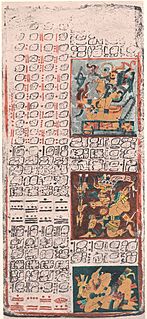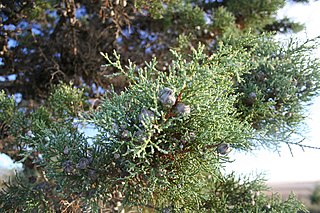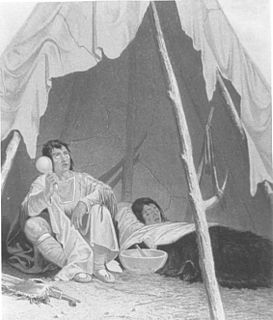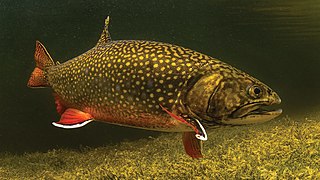
Alaska is a U.S. state on the northwest extremity of the country's West Coast, just across the Bering Strait. A semi-exclave of the U.S., it borders the Canadian province of British Columbia and territory of Yukon to the east and southeast and has a maritime border with Russia's Chukotka Autonomous Okrug to the west. To the north are the Chukchi and Beaufort seas of the Arctic Ocean, while the Pacific Ocean lies to the south and southwest.
Indian or Indians refers to people or things related to India, or to the indigenous people of the Americas, or Aboriginal Australians until the 19th century.

North America is a continent entirely within the Northern Hemisphere and almost all within the Western Hemisphere. It can also be described as a northern subcontinent of the Americas. It is bordered to the north by the Arctic Ocean, to the east by the Atlantic Ocean, to the southeast by South America and the Caribbean Sea, and to the west and south by the Pacific Ocean. However, Greenland, because it is on the North American Tectonic Plate, is often included as part of North America geographically.

Native Americans, also known as American Indians, First Americans, Indigenous Americans and other terms, are the indigenous peoples of the United States, sometimes including Hawaii and territories of the United States and sometimes limited to the mainland. There are 574 federally recognized tribes living within the US, about half of which are associated with Indian reservations. "Native Americans" are Indigenous tribes that are originally from the continental United States, plus Alaska Natives.

Although Europeans had explored and colonized northeastern North America c. 1000 CE, European colonization of the Americas typically refers to the events that took place in the Americas between about 1500 CE and 1800 CE, during the Age of Exploration. During this time period, several European empires–primarily Spain, Portugal, Britain, and France—began to explore and claim the natural resources and human capital of the Americas resulting in the disestablishment of some Indigenous Nations, and the establishment of several settler-colonial states. Some formerly European settler colonies—including New Mexico, Alaska, the Prairies/northern Great Plains, and the "Northwest Territories" in North America; the Isthmus of Tehuantepec, the Yucatán Peninsula, and the Darién Gap in Central America; and the northwest Amazon, the central Andes, and the Guianas in South America—remain relatively rural, sparsely populated and Indigenous into the 21st century, however several settler-colonial states, including Brazil, Colombia, Mexico, Argentina, and the United States grew into settler-colonial empires in their own right. Many of the social structures—including religions, political boundaries, and linguae francae—that predominate the western hemisphere in the 21st century are descendants of the structures established during this period.

Indigenous languages of the Americas are spoken by indigenous peoples from Alaska, Nunavut, and Greenland to the southern tip of South America, encompassing the land masses that constitute the Americas. These indigenous languages consist of dozens of distinct language families, as well as many language isolates and unclassified languages.

Cypress is a common name for various coniferous trees or shrubs of northern temperate regions that belong to the family Cupressaceae. The word cypress is derived from Old French cipres, which was imported from Latin cypressus, the latinisation of the Greek κυπάρισσος (kyparissos).

The fur trade is a worldwide industry dealing in the acquisition and sale of animal fur. Since the establishment of a world fur market in the early modern period, furs of boreal, polar and cold temperate mammalian animals have been the most valued. Historically the trade stimulated the exploration and colonization of Siberia, northern North America, and the South Shetland and South Sandwich Islands.

Alaska Natives or Alaskan Natives are indigenous peoples of Alaska, United States and include: Iñupiat, Yupik, Aleut, Eyak, Tlingit, Haida, Tsimshian, and a number of Northern Athabaskan cultures. They are often defined by their language groups. Many Alaska Natives are enrolled in federally recognized Alaska Native tribal entities, who in turn belong to 13 Alaska Native Regional Corporations, who administer land and financial claims.

A wildflower is a flower that grows in the wild, meaning it was not intentionally seeded or planted. The term implies that the plant probably is neither a hybrid nor a selected cultivar that is in any way different from the way it appears in the wild as a native plant, even if it is growing where it would not naturally. The term can refer to the flowering plant as a whole, even when not in bloom, and not just the flower.

Population figures for the indigenous people of the Americas prior to colonization have proven difficult to establish. Scholars rely on archaeological data and written records from European settlers; most scholars writing at the end of the 19th century estimated that the pre-Columbian population was as low as 10 million, but by the end of the 20th century most scholars gravitated toward an estimate of around 50 million—with some historians arguing for an estimate of 100 million or more.

The brook trout is a species of freshwater fish in the char genus Salvelinus of the salmon family Salmonidae. It is native to Eastern North America in the United States and Canada, but has been introduced elsewhere in North America, as well as to Iceland, Europe, and Asia. In parts of its range, it is also known as the eastern brook trout, speckled trout, brook charr, squaretail, or mud trout, among others. A potamodromous population in Lake Superior, as well as an anadromous population in Maine, is known as coaster trout or, simply, as coasters. The brook trout is the state fish of nine U.S. states: Michigan, New Hampshire, New Jersey, New York, North Carolina, Pennsylvania, Vermont, Virginia, and West Virginia, and the Provincial Fish of Nova Scotia in Canada.

North American Cuisine includes foods native to or popular in countries of North America, such as Canadian cuisine, American cuisine, African American cuisine, Mexican cuisine and Central American cuisine. North American cuisines display influence from many international cuisines, including Native American cuisine, Jewish cuisine, African cuisine, Asian cuisine, and especially European cuisine.

The indigenous peoples of the Americas encompasses the inhabitants of the Americas before the arrival of the European settlers in the 15th century, and present-day ethnic groups who identify themselves with those historical peoples.
Native Americans may refer to:
Race and ethnicity in the United States is a complex topic because the United States of America has a racially and ethnically diverse population. At the federal level, race and ethnicity have been categorized separately.

The peyote, scientific name Lophophora williamsii, is a small, spineless cactus with psychoactive alkaloids, particularly mescaline. Peyote is a Spanish word derived from the Nahuatl peyōtl[ˈpejoːt͡ɬ], meaning "caterpillar cocoon", from a root peyōni, "to glisten". Peyote is native to Mexico and southwestern Texas. It is found primarily in the Sierra Madre Occidental, the Chihuahuan Desert and in the states of Nayarit, Coahuila, Nuevo León, Tamaulipas, and San Luis Potosí among scrub. It flowers from March to May, and sometimes as late as September. The flowers are pink, with thigmotactic anthers.

Slavery among Native Americans in the United States includes slavery by and slavery of Native Americans roughly within what is currently the United States of America.
The genetic history of Indigenous peoples of the Americas is divided into two sharply distinct episodes: the initial peopling of the Americas during about 20,000 to 14,000 years ago, and European contact, after about 500 years ago. The former is the determinant factor for the number of genetic lineages, zygosity mutations and founding haplotypes present in today's Indigenous Amerindian populations.














